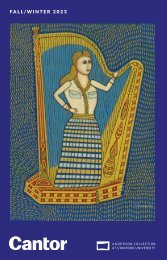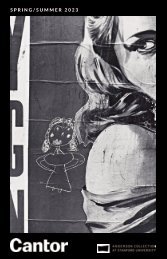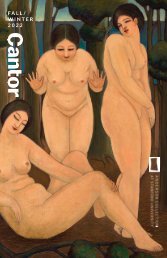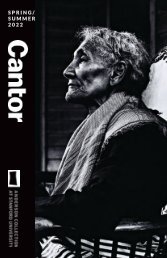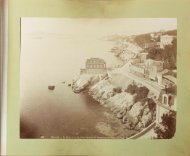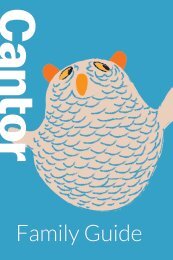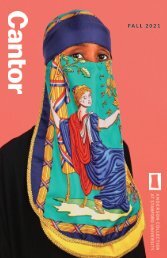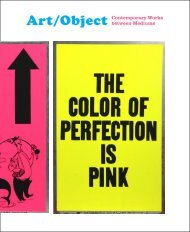Learning Guide | Artists & Anatomists
After the sixteenth century, European artists gained knowledge of human anatomy studying live models and attending anatomical demonstrations held at academies and studios—or sought out work with medical men with access to corpses. Whether created to represent an empirical or imagined encounter, these representations of the body often reveal society’s conflicted feelings about anatomical study being research toward a greater good, or a perverse and sacrilegious violation. Elizabeth Kathleen Mitchell, PhD Burton and Deedee McMurtry Curator, and Director of the Curatorial Fellowship Program
After the sixteenth century, European artists gained knowledge of human anatomy studying live models and attending anatomical demonstrations held at academies and studios—or sought out work with medical men with access to corpses. Whether created to represent an empirical or imagined encounter, these representations of the body often reveal society’s conflicted feelings about anatomical study being research toward a greater good, or a perverse and sacrilegious violation.
Elizabeth Kathleen Mitchell, PhD
Burton and Deedee McMurtry Curator, and Director of the Curatorial Fellowship Program
You also want an ePaper? Increase the reach of your titles
YUMPU automatically turns print PDFs into web optimized ePapers that Google loves.
6<br />
■ ■ ■ 6. Cornelis Cort engraved this image after a drawing by Stradanus<br />
(Flanders, 1523–1605), a member of the Accademia del Disegno in<br />
Florence, which had been founded in 1563. The image represents the<br />
experience of formal art instruction by depicting students practicing<br />
painting, sculpture, engraving, architectural design, and drawing in<br />
an imaginary gallery space. In the left foreground, students draw<br />
directly from a skeleton. A man wearing spectacles raises a knife<br />
to a suspended corpse in order to remove the skin and reveal the<br />
muscles. This prominent depiction of anatomical study emphasizes the<br />
importance given to direct study of the body.<br />
■ ■ ■ 7. By the sixteenth century, Padua was Europe’s center for<br />
anatomical study. In addition, Italian artists were known for dissecting<br />
corpses on their own in order to study them closely and, ultimately, to<br />
better depict bodies in history paintings. In Pietro Francesco Alberti’s<br />
imagining of an art academy, students draw from a skeleton and, in<br />
the background at right, men gather around a body being opened at<br />
the chest. A painting of the Crucifixion hangs above the anatomization<br />
table. The arms of the corpse extend in a pose similar to that of Christ,<br />
and the male figures in the painting seem to react to both.<br />
7<br />
8<br />
■ ■ ■ 8. An instructor and three youths stand at the bases<br />
of elevated statues of Hercules, Apollo, and Venus in the<br />
upper left quarter of this imaginative depiction of an art<br />
academy. The instructor directs the students toward a<br />
cast of an ecorché, a corpse with the skin removed, rather<br />
than the classical sculptures. The teacher’s actions stress<br />
the Enlightenment belief that the artist must study nature<br />
directly in addition to the more traditional and stylized<br />
interpretations of the body.<br />
6. Cornelis Cort, the Netherlands, 1533–before 1578. The Practice of the Visual Arts, 1578.<br />
Engraving. 17 3/16 in. x 11 3/4 in. (plate) 18 x 12 5/8 in. (sheet) 43.7 x 29.9 cm. Lent by Kirk<br />
Edward Long, L.15.234.2007<br />
7. Pier Francesco Alberti, Italy, 1584–1638. The Academy of Painters (Academia d’Pitori), c. 1610.<br />
Etching. 20-3/4 x 16-1/8 in. 52.7 x 41 cm. Committee for Art Acquisitions Fund, 1975.4<br />
8. Nicolas Dorigny, France, 1658–1746. To Youthful Students of Design, 1728. Engraving. 16-5/16<br />
x 11-1/4 in. 41.5 x 28.5 cm. Robert E. and Mary B. P. Gross Fund, 2007.3<br />
4




